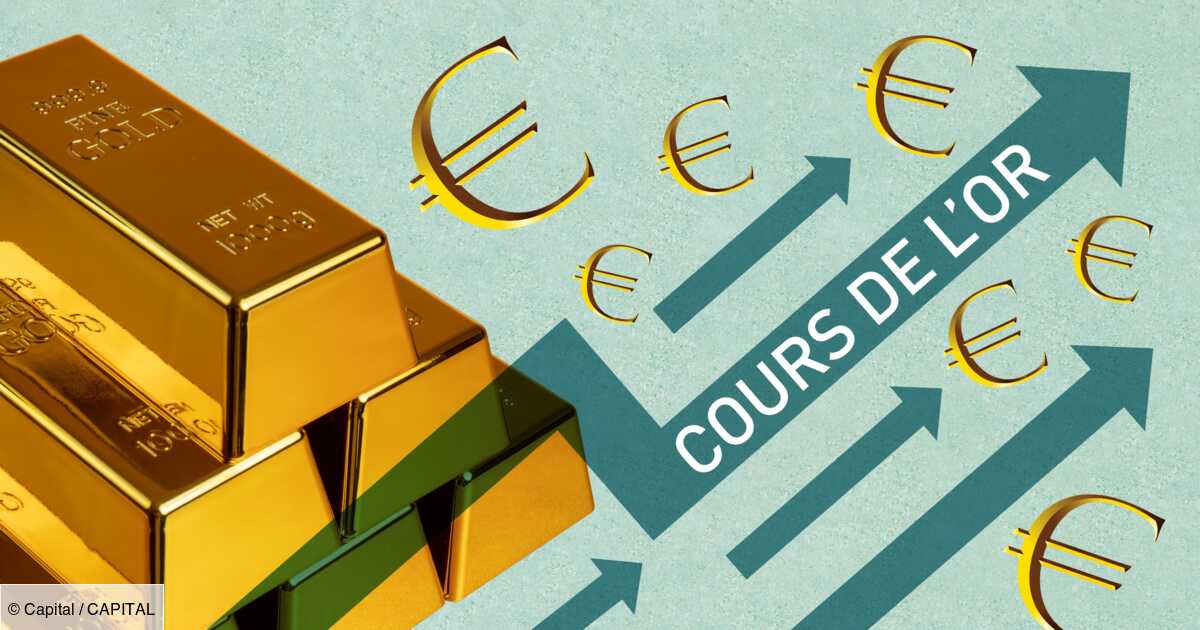
Reading time:
3 min
With the price of gold breaking record after record, parting with your precious metal can be tempting to make a capital gain. But be careful to be aware of the tax rules that apply if you want to resell your gold… at a high price!
© Capital
– The price of gold reached a new historic record on August 20.
Wouldn’t it be a good time to cash in your winnings? That’s the question many gold owners must be asking themselves, given the records that the most precious metal has continued to break this year. After hitting a historic high of $2,200 per ounce – the equivalent of 31 grams – on July 17, the price of gold reached a new high on August 20, breaking the $1,000 mark. $2,500 per ounceFor an investor who bought an ounce of gold on January 1st at $2,060, this represents a potential capital gain of 22%.
And for historical investors, the temptation to sell now that gold is at its highest is even greater. Holders of the yellow metal since January 2014, for example, can currently make a capital gain of 108%. The return on investment even climbs to 525% for those who invested 20 years ago! Be careful though, because these promises of tempting profits do not take into account the taxation of gold upon resale, and its specific rules that must be kept in mind.
The choice between flat rate tax and degressive tax on capital gains
As a general rule, gold purchased for investment purposes falls into the category of “precious metals”, which includes bars, ingots and coins issued after 1800 and no longer legal tender – it is impossible to buy anything with them -, like the Napoleons in France. When reselling these precious metals, a flat tax of 11.5% is generally applied to the amount of the transaction: if you resell a bar or a coin worth 1,000 euros, you will have to pay 115 euros in tax.
Why the price of gold is soaring and is expected to soar further in the coming months
But an alternative tax system exists, provided that you can prove the date on which you purchased your precious metal, and its value at the time. Easy for ingots: they are numbered, so all you need is the same number on your invoice and the ingot itself. It is more difficult for coins, which are not always numbered, which is why they can be sold sealed to their invoice. With your proof of purchase in hand, you can opt for another tax system, of 36.2%.
Is degressive taxation always more attractive?
A much heavier tax than the flat tax of 11.5%, you might say, except that this second option only applies to capital gains. In other words, if the price of your gold has gone from 500 to 1,000 euros since your purchase, you will not pay tax on 1,000 euros when you resell it, but only on the 500 euros of capital gains! Another advantage is that this tax is degressive over time: after 3 years of holding your gold, it decreases by 5% each year, reaching 0 after 22 years!
The choice between these two “formulas” will therefore largely depend on the number of years separating you from your investment. “Typically, for those who invested last year and want to resell this year, the flat rate tax may be more attractive.”explains Jean-François Faure, founding president of the AuCoffre group. “Conversely, the longer you wait, the less likely it is that the flat-rate tax will be relevant, because capital gains taxation is degressive.”
Different taxation for reselling jewelry and tokens
But what about individuals who would like to take advantage of the boom in barbarian relics to resell not investment gold, but, for example, jewelry? In this case, a different tax system applies, which also applies to certain coins that fall into the category of “tokens”, because, not being issued by States, they have no face value or legal tender. “This is the case, for example, of the Vera Valor pieces, or of certain Napoleons.”explains Jean-François Faure.
In this case, you are only taxed from 5,000 euros on resale, and this, every 30 days. In other words, you can sell between 0 and 5,000 euros of jewelry and tokens without any taxation. If you want to repeat the transaction, you will have to wait 30 days to benefit from this exemption again. And if the amount of the transaction exceeds 5,000 euros, a flat rate tax of 6.5% applies. But you also have the option of opting for the degressive tax on capital gains, and its starting rate of 36.2%.
Gold: how to buy it to take advantage of its soaring price?
Receive our latest news
Every week, the key articles to accompany your personal finance.







